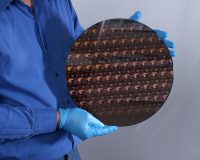Recently, the United Nations Department of Economic and Social Affairs released the “2022 World Population Prospects”, which shows that the global population is expected to reach 8 billion by November 15, 2022. The world population is expected to peak at about 10.4 billion in the 2080s and remain there until 2100.
Population growth has obvious advantages for the labor force, but the optimization of labor structure still has huge demand for robots. On the other hand, with the rapid growth of the demand for agricultural products due to the increase in population, how to increase production and improve efficiency has become an important issue.
Agricultural robots reach the window period and become a billion-dollar business
As a key direction of agricultural modernization, the application of agricultural robots is expected to reach new heights in the next few years. Institutions estimate that by 2026, robot spending will increase from nearly 5 billion US dollars in 2021 to 12 billion US dollars.
Agricultural robots are the application of robots in agricultural production. They can be controlled by different program software and are a new generation of unmanned automatic operation machines that can adapt to various agricultural operating environments. There are many types, and the common ones are weeding robots, fertilizing robots, medicine spraying robots, pollination robots, grazing robots and picking robots.
The urgent needs brought about by population growth, the economic reality of conventional agriculture and technological progress, the three factors superimposed, provide an opportunity for robots to “show their talents” in the field of agriculture.
At present, a large number of regions around the world have begun to adopt robot technology to meet the challenges faced by farmers in the field of agricultural production, and the application of agricultural robots is expected to reach new heights in recent years. The US “Wired” magazine predicts that in the next five years, global farms will integrate robotics into production activities at a rate that exceeds that of the industrial market.
However, as far as the situation in China is concerned, agricultural robots are still in a relatively early stage, and the performance of agricultural modernization is mainly the application of large-scale agricultural machinery and agricultural product processing lines, but there is no targeted application in smaller links or in a single field. Products, grass-roots agricultural activities are still very typical labor-intensive industries.
In my country, according to statistics, there are currently less than 10 companies in the field of agricultural robots. In terms of market value, the three A-shares have a market value of over 10 billion, namely Zoomlion, Aerospace Rainbow and SIASUN. They are the first to make arrangements in the huge market of smart agriculture. For example, Zoomlion Agricultural Machinery conducts small, intelligent, For the research and development of green and multi-functional agricultural robot equipment, Zhejiang Agricultural and DJI signed a strategic cooperation agreement to cooperate on agricultural drones and related agricultural mechanization and smart agricultural applications in Zhejiang Province.
Deploying applications in the agricultural field is also a good business for robot companies. After all, as a typical labor-intensive industry, the wages of farm workers account for almost 41% of the total agricultural expenditure, and the replacement of robots has an attractive price/performance ratio. Agronomy, on the other hand, is considered a “drudgery” by many people, so labor is constantly flowing out and they have to turn to robots for help.
Since the release and implementation of “Made in China 2025”, the development of high-end agricultural robot equipment has become an important task for society. Since last year, the application of robots in the agricultural field has become popular. Although the deployment is not early, it is fortunate that the direction has been found in time.
At present, the Ministry of Industry and Information Technology and the Department of Agricultural Mechanization Management have collected and released typical application scenarios of robots in the agricultural field, forming a batch of replicable and referential results. Some institutions predict that the market size of the agricultural robot industry will reach 1.044 billion yuan in 2026, with considerable development prospects.
According to the “Analysis Report on Operation Status and Development Prospects of China’s Agricultural Robot Industry from 2020 to 2026”, the scale of my country’s agricultural robot market in 2014 was 91 million yuan. %above.
For the development of agricultural robots, some experts said that the turning point will be reached. It is expected that 2024 will be the “trigger year” of agricultural robots. After the foreshadowing and testing in recent years, the next two years will continue to grow, and shipments will begin in 2024. Significant acceleration. The cost of farm automation packages will also begin to gradually decline, further driving mass adoption.




GIPHY App Key not set. Please check settings